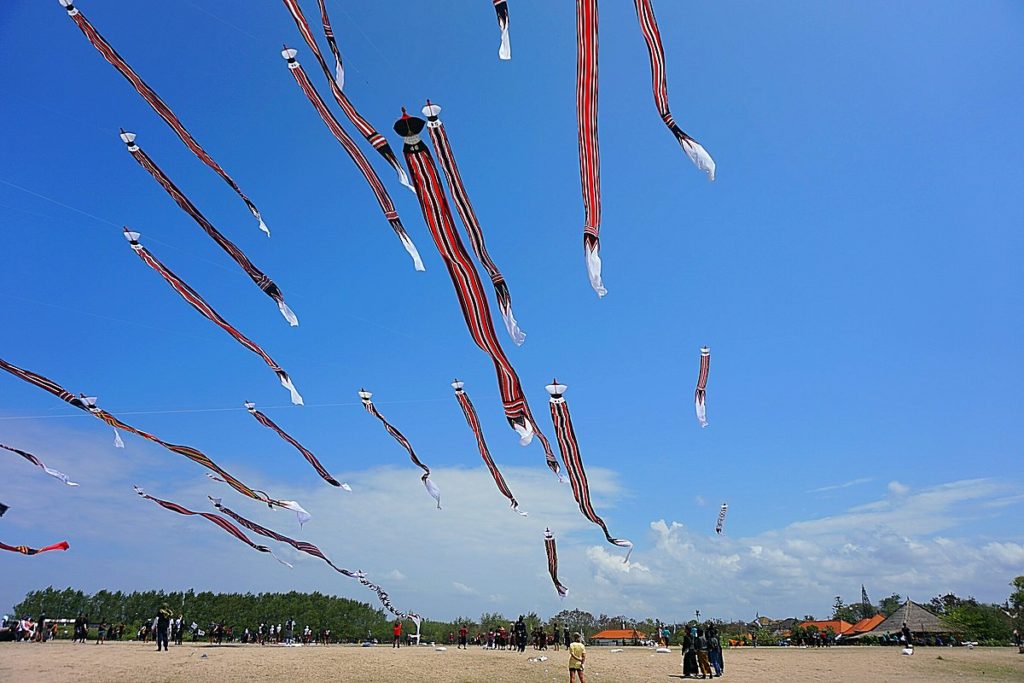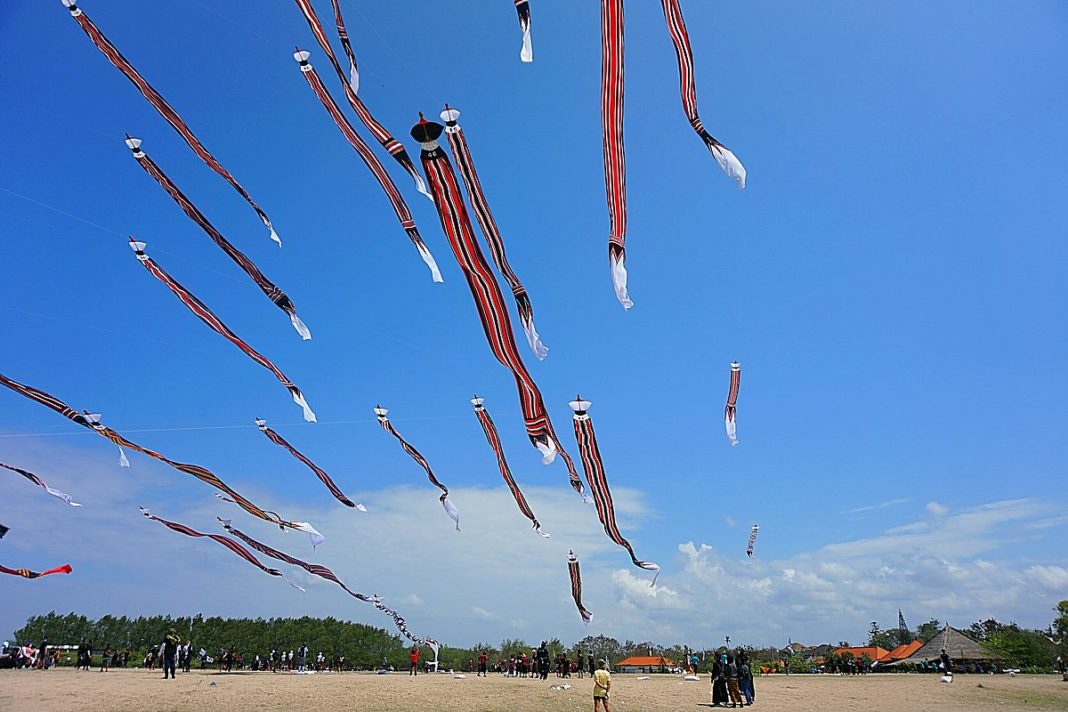The festival is held from July to October every year when the dry season comes and the wind blowing from the ocean creates the perfect weather conditions for the kite lovers to fly their kites. This festival is hosted across several locations on the island of Bali. The opening and closing events take place on Padanggalak Beach, which is on the northern side of Sanur. Other locations of the festival would include Masceti Beach which is on the Gianyar town; Ungasan; Mertasari Beach, Sanur; Abiansemal, Badung; Klungklung, Pelangi; Ungasan, Bukit Peninsula; Peliatan, Ubud; Marga, Tabanan; Denpasar and Kuta.
 Bali Kite Festival is an International Festival to promote and conserve the Balinese tradition. In Bali culture, kite flying started as a seasonal festival that symbolises gratitude and respect towards the Hindu gods for the abundant harvest and crops. It is also a way to seek the blessing from the gods. A gamelan orchestra plays music throughout the festival.
Bali Kite Festival is an International Festival to promote and conserve the Balinese tradition. In Bali culture, kite flying started as a seasonal festival that symbolises gratitude and respect towards the Hindu gods for the abundant harvest and crops. It is also a way to seek the blessing from the gods. A gamelan orchestra plays music throughout the festival.
The communal youth group which is also known as “Banjar” would come with their respective kite group which is known as “Sekaa Layangan” to compete for the first prize. A Sekaa Layangan team consists of 70 to 80 people, of which the control of the kite is done by a group of about 10 people.
 During the festival, there will be many different designs of kites, but there will be 3 traditional kites always in attendance: the bird-shaped kites called Janggan, the leaf-shaped kites called Pecukan, and the Bebean which are fish shaped kite.
During the festival, there will be many different designs of kites, but there will be 3 traditional kites always in attendance: the bird-shaped kites called Janggan, the leaf-shaped kites called Pecukan, and the Bebean which are fish shaped kite.
Bebean is the largest kite, Janggan is the longest kite with a tail over 100 meters and Pecukan is the kite that requires the most skill to make it fly. The dimensions of these kites can be anywhere between 10 metres in length and 4 metres wide. White, red and black are often the color combinations most commonly seen in traditional kites. The colour red stands for Brahma(the creator of the universe); white signifies Vishnu (the protector) and black stands for Shiva (the destroyer).
According to Wikipedia and holidify.com














